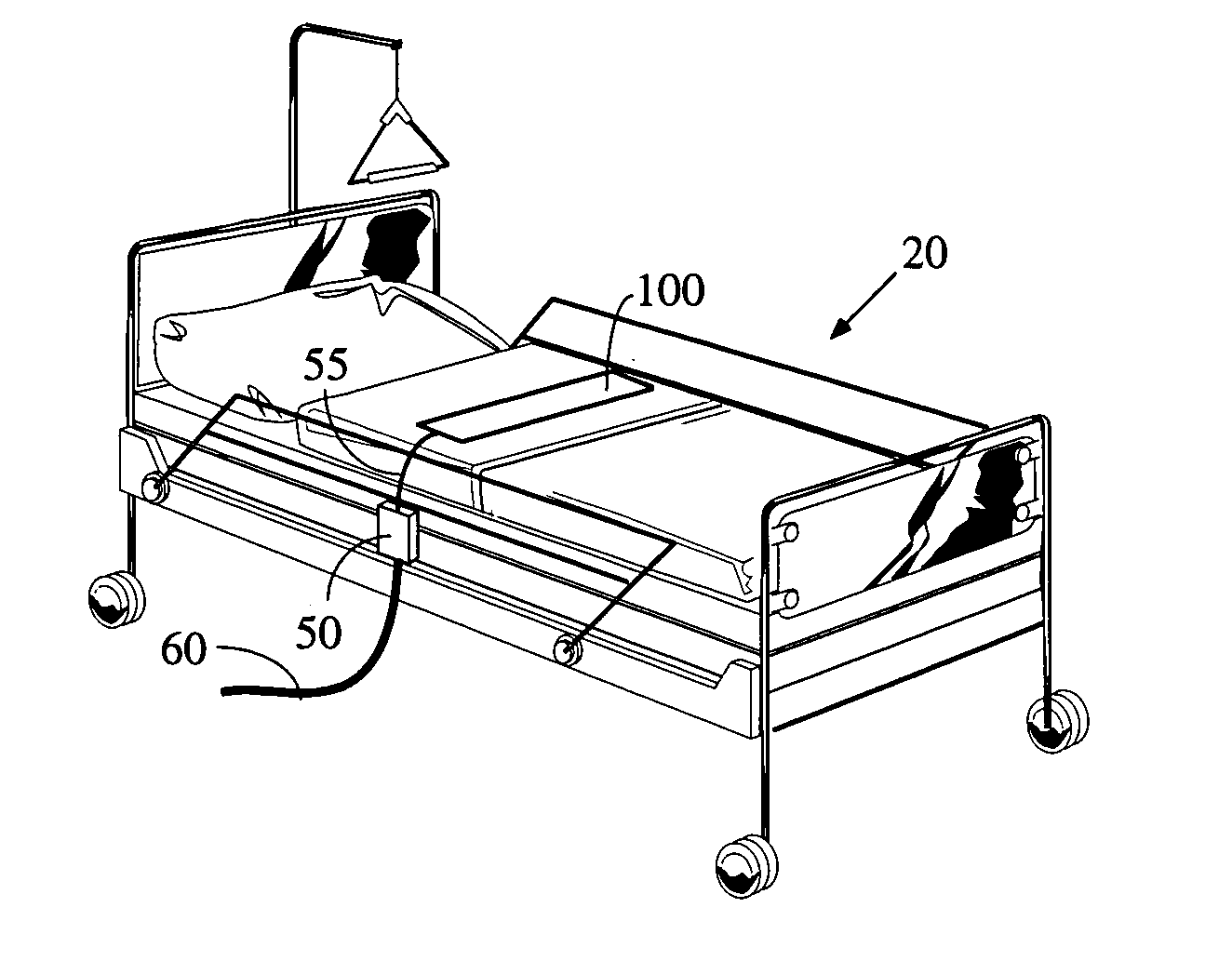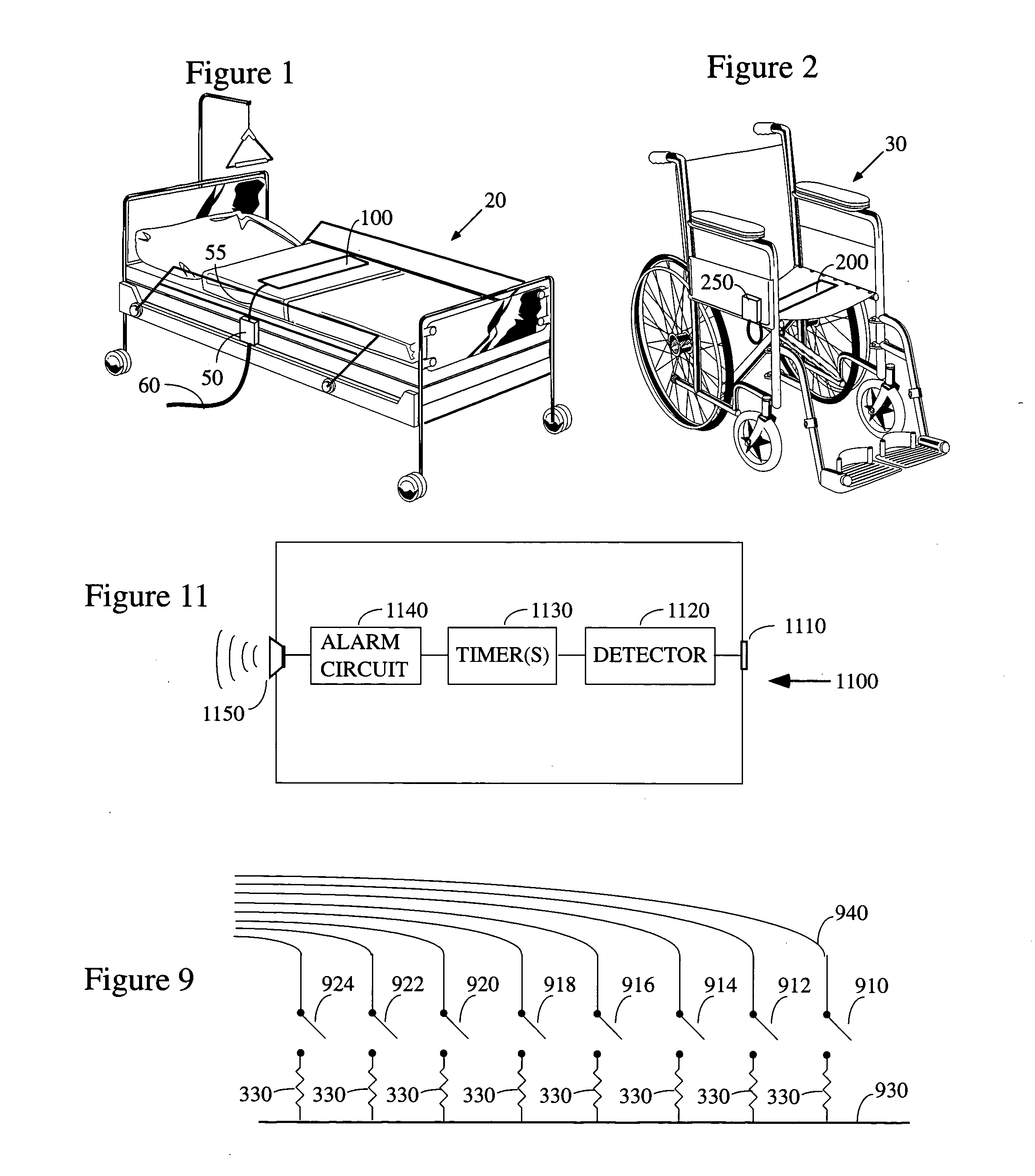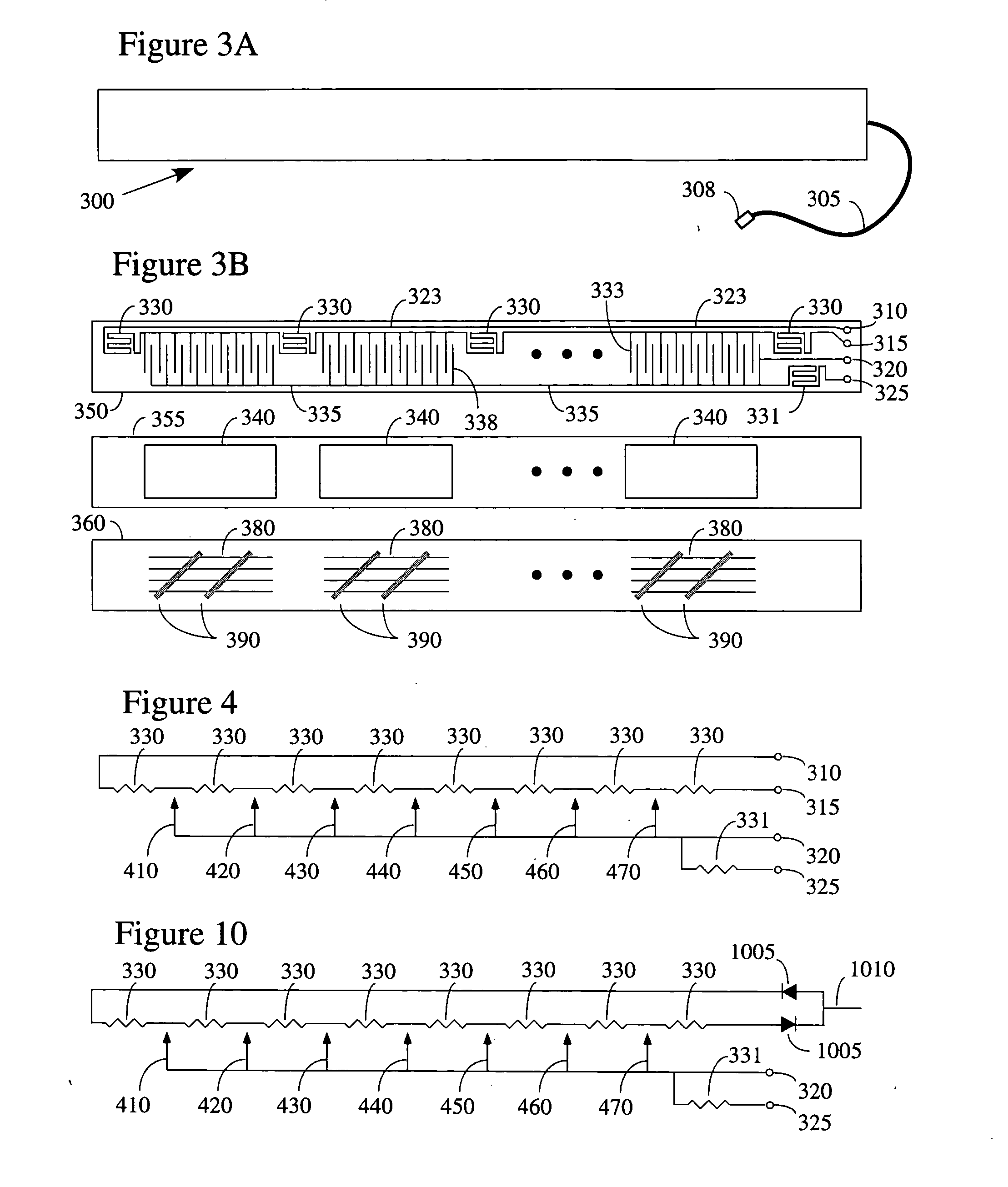Sensor and method for detecting a patient's movement via position and occlusion
a sensor and position technology, applied in the field of monitoring systems, can solve problems such as alarm generation
- Summary
- Abstract
- Description
- Claims
- Application Information
AI Technical Summary
Benefits of technology
Problems solved by technology
Method used
Image
Examples
Embodiment Construction
According to a preferred aspect of the instant invention, there is provided an electronic patient monitor for use with a patient sensor, wherein the attached sensor is at least suitable for determining the location of the patient in the bed or chair through the use of a resistive ladder.
General Environment of the Invention
Generally speaking, electronic patient monitors of the sort discussed herein work by first sensing an initial status of a patient, and then generating a signal when that status changes (e.g., the patient changes position in the bed, the patient fails to change position in the bed, the patient leaves the bed, the sensor changes from dry to wet, the temperature of the sensor changes, etc.) or, in some cases, if the initial condition persists for too long a period of time (e.g., if the patient has not moved during a predetermined time interval). Turning now to FIG. 1 wherein the general environment of one specific embodiment of the instant invention is illustrated...
PUM
 Login to View More
Login to View More Abstract
Description
Claims
Application Information
 Login to View More
Login to View More - R&D
- Intellectual Property
- Life Sciences
- Materials
- Tech Scout
- Unparalleled Data Quality
- Higher Quality Content
- 60% Fewer Hallucinations
Browse by: Latest US Patents, China's latest patents, Technical Efficacy Thesaurus, Application Domain, Technology Topic, Popular Technical Reports.
© 2025 PatSnap. All rights reserved.Legal|Privacy policy|Modern Slavery Act Transparency Statement|Sitemap|About US| Contact US: help@patsnap.com



